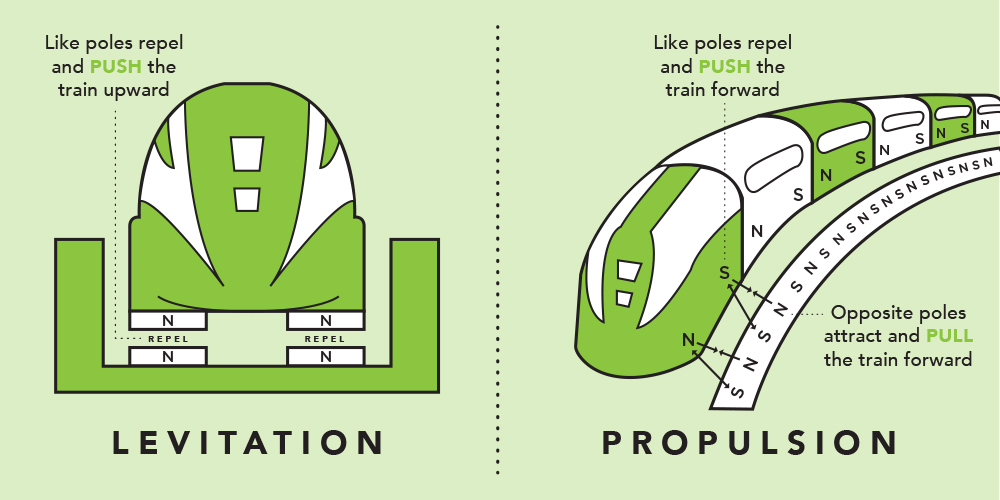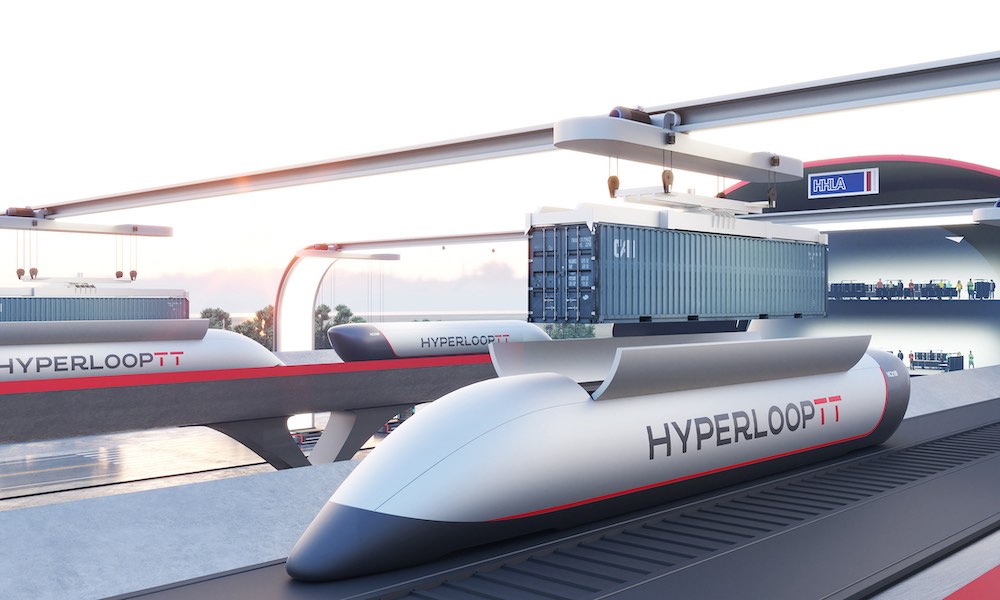INTRODUCTION
Transportation, defined as “the movement of people or goods from one place to another” by Cambridge dictionary, has evolved with the time, just like every other aspect in life. Right now, the world is so ahead in technology that advancements are being developed every day. What comes ahead concerning transportation are solutions for most of the problems the world has right now, cities’ street congestion, environmental pollution, etc. When it comes to technology, everything is about time. Based on research by scientists, five years from now cities will begin to shift towards networks of driverless taxis. Ten years from now almost everyone will use public transportation, with alternative fuel such as maglev technology, short for magnetic levitation, which has the advantage of having no friction having the capability of traveling 600 mph. Fifteen years from now all vehicles in the streets will be fuel eco-efficient, autonomous or at least have intelligent transport systems. Thirty years from now UAM (Urban Air Mobility) will begin to be a common method of transportation.. All these advancements will reduce global warming by using alternative fuels, make main cities a more habitable place.
AUTONOMOUS VEHICLES
One advancement that is essential for the world to become a livable place is the automatization of transportation. This is beneficial in every way possible. Autonomous vehicles will become one of the safest methods of transportation by eliminating human error. These vehicles will work with a series of sensors, radars, lasers, and cameras, all able to analyze and process information about their surroundings faster than any human can. Jim Hackett, Ford’s chief executive, said they were teaming up with Volkswagen “to tackle the self-driving challenge”. Volkswagen and Ford are planning to use “autonomous-vehicle technology from a start-up company, called Argo AI, in a taxi-like service in a few urban zones by 2021”. But it has been a strenuous task, having to stop each time an accident occurs. Mr. Salesky, Argo’s chief executive said: “Argo and many competitors had developed about 80% of the technology needed to put self-driving cars into routine use — the radar, cameras, and other sensors that can identify objects far down roads and highways. But the remaining 20%, including developing software that can reliably anticipate what other drivers, pedestrians, and cyclists are going to do, will be much more difficult” (New York Times).

ADVANTAGES, DISADVANTAGES, CONCEPT OF BINARY POWER & MAGNETIC LEVITATION
However, Tesla’s chief executive, Elon Musk, believes its new self-driving system, based on a newly designed computer chip, and the data it gathers from Tesla cars now on the road will enable the company to start offering completely autonomous driving next year. Honda and the tech giant SoftBank invested in Cruise an autonomous vehicle start-up company. Amazon, whose goal is to deliver products to its shoppers by driverless vehicles, invested in Aurora, another start-up in this area”. Nevertheless, the globalization of global positioning systems, sensors, and mobile communication technology has already benefited in terms of improved navigation and congestion mitigation. One of the biggest factors of the future of transportation is finding a solution to the distressing problem of global warming. It is a problem concerning the entire world. It endangers people’s health, and it threatens other basic human needs. Mitigating the number of gasses that are being released into the atmosphere by beginning to use alternative fuels would be the smartest way to begin this change.

According to NASA, carbon dioxide levels in the air are the highest they have been in 650,000 years. Global temperature has risen 1.9 degrees since 1880, Arctic ice has decreased 12.8% per decade and the sea levels are rising 3.3 millimeters per year. It is necessary to make a change before it is too late. And according to the Union of Concerned Scientists: “Our personal vehicles are a major cause of global warming. Collectively, cars and trucks account for nearly one-fifth of all US emissions, emitting around 24 pounds of carbon dioxide and other global-warming gases for every gallon of gas. Ohio University ran a study that showed that “reducing the weight of the vehicle by as little as 10% can improve fuel economy by 6% or more”. The federal government estimates that if just “25% of cars used lighter-weight materials, the country would consume 5 billion fewer gallons of gas each year by 2030”. Other ways to reduce emissions are batteries and binary power or magnetic levitation. The friction-free, no-moving-parts vehicles are called ‘binary power’. Binary power is the concept where two harmless beams of energy will intersect at some point in space creating a source of power according to the Virgin Hyperloop one project. The future of transportation brings an eco-friendly era within.
Maglev, short for magnetic levitation, is a technology that counts with the advantage of having no friction, able to reach operational speeds of 500-600 km per hour, or even higher speeds if the train circulates in a low-pressure tube. Jesse Powell, the son of the Maglev inventor, explains maglev as “just a box with magnets on the four corners”.

HYPERLOOP
Hyperloop, it’s a concept proposed by Elon Musk’s company Space X. The concept has some resemblance to maglev transportation but is a totally different concept. The concept is a pneumatic tube that uses a series of linear induction motors and compressors to propel vehicles at super-fast speeds. The first proposed Hyperloop route would take the passengers from Los Angeles to San Francisco, allowing them to complete a 350-mile trip in less than an hour. Hyperloop One’s team clarifies that there are four key differences between maglev transportation and hyperloop. It’s environmentally friendly, with a smaller environmental impact, more efficient energy consumption and no direct emissions or noise. The concept of this new form of transportation will become the main source of mobility by 2050.

CONCLUSION
One outstanding issue that is present in the main cities all around the world is street congestion. Moving ten blocks in a car can take up to 50 minutes and that’s something irrational for people living in the twenty-first century. Since the last century, the world’s population has increased exponentially almost quadrupled. The main focus of the future of transportation is to make the world a better place. Transportation will bring solutions to a substantial amount of problems like Global warming, etc. By solving these problems, the world will become a more efficient, livable and better place.

Sai ganesh
View Details
You may also like

Soul Pleasure Vs Societal Pleasure
Hard to Accept this Definition but Soft to Reject? Soul Pleasure and Pressure Vs Societal Pleasure and Pressure? Read this perspective!Dear Friends and StudentsGustavo Petro, the Mayor of Bogota,

The Power of Relationships in Education
In the fast-paced world of education, teachers often find themselves juggling lesson plans, assessments, and administrative tasks. However, amidst the hustle, one fundamental truth remains unchanged: education

A Symphony of Knowledge with Tenneti Anuradha Madam
At Edgroom, we celebrate educators who inspire a love for learning. Today, we honor Tenneti Anuradha Madam, a passionate chemistry teacher with a unique blend of scientific expertise and musicality.A

Confluence of Declining Math Ability
"Confluence of Declining Math Ability, Mobile Device Usage in Child Development, and AI as Future Teachers: Exploring the Changing Landscape and Implications for the World"Dear Friends and

30 Secs Sales Cycle!
30 Secs Sales Cycle! No ivy league MBA can teach this skill but the Power of Hunger! Admire these Unsung Heroes! Read this perspectiveDear Friends and StudentsI stay in Visakhapatnam. Every day

My Journey through JEE Preparation: Books I Brought and Used
Introduction:Embarking on the journey of JEE preparation can be both exciting and overwhelming. As a student who went through this experience, I would like to share my insights on the books I brought

AI Impact on Jobs
Unleashing the Power of AI: Job Market Dynamics (AI shrinks large set of jobs to 4), Skill Reshaping, and New OpportunitiesDear Friends and StudentsRecently I had an opportunity to present my views

Electrical and Electronics Engineering
What is EEE? Is an academic program that deals with Electrical and Electronics Engineering. It was one of the most sought-after courses amongst engineering students. Presently it is

Real Birds Love Story
How this Famous Real Birds Love Story Triggered an Urgent Plea to Protect Migratory Birds: A Call for Legal ReformDear Friends and StudentsI am sure you might have read this incident occurred in

Wake-Up Call for Teachers: Revitalize Your Professional Growth
Dear Teachers,It’s time for an honest reflection on our professional journey. How many of us have been teaching the same chapters, year after year, without change? Have we felt a sense of monotony

Are you cutting the Tennis Balls?
A Can Can Store 2 Tennis Balls! Cut them to Half, 4 Balls Can Fit into the Same Can! Are Our Competitive Exams Promoting this Ideology?!! Read this Interesting Perspective!!Dear Friends and StudentsOne














